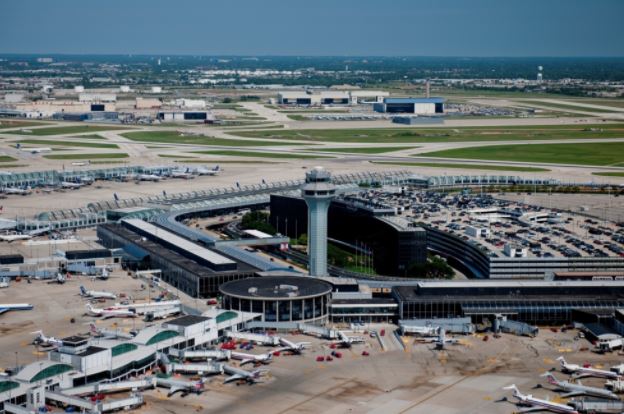
Mayor Rahm Emanuel joined the Chicago Department of Aviation (CDA), Aeroterm and cargo executives for the opening of the second phase of the $220 million northeast cargo development at O’Hare International Airport on August 17, 2017. The new cargo facility opens ahead of schedule in direct response to the strong demand for moving air cargo through Chicago to markets around the world. In just under a year, the partial completion of the northeast cargo development has already created approximately 600 permanent jobs, outpacing earlier projections it would create 1,200 jobs when the project is complete.
With O’Hare’s newest cargo development on track and ahead of schedule, air cargo volume is already up by 15 percent over last year, putting Chicago on pace to handle 1.8 million tonnes in 2017. This marks another record year for cargo at O’Hare-one of the nation’s premier cargo airports.
The Northeast Cargo development expands and enhances the efficiency of the airport’s cargo operations at no cost to Chicago taxpayers, funded by a $160 million investment by Aeroterm and more than $62 million of airport funds. The 240,000-square-foot Phase II building is home to Burak, Cargolux and Swissport tenant operators. When complete, it will be the largest airside cargo development built in the last decade at a U.S. international gateway airport.
Keeping pace with Phases I and II of the northeast cargo development, and to support the record growth of air cargo, Phase III is now expected to open in 2-3 years, also ahead of schedule. In total, these investments will create an estimated 10,000 new construction and permanent jobs, as well as hundreds of millions of dollars in new revenue for the City.
Expanding new cargo warehouse capacity provides O’Hare the ability to process a greater volume of air cargo in a number of ways. The addition of 747-8 capable aircraft ramps provides 50 percent additional capacity to handle cargo from jumbo jet freighters; and in its final form the northeast cargo development will deliver 800,000 square-feet of warehousing and apron pavement.
These investments will make way for up to 15 wide body aircraft to unload at any given time at O’Hare. And with each jumbo jet freighter estimated to deliver cargo valued at $3 million on average, this is expected to drive hundreds of millions in economic benefit for the City and surrounding region.
In addition to the new capacity afforded by the northeast cargo campus, Chicago’s surge in cargo activity is due in large part to its central geography and strong network of transportation infrastructure. Chicago has surpassed its large hub peer airports as the top destination for air trade with China, and trade with Asian countries continues to grow each year as new capacity becomes available at O’Hare.
The northeast cargo development follows on a series of initiatives by the Emanuel Administration to invest in the modernization of O’Hare. The City recently announced the establishment of a new, uniform rate structure for aeronautical real estate leases at O’Hare International Airport that will generate $41 million in additional annual revenue for the City to invest in airport improvement projects at O’Hare.
Also expected to expand capacity and establish modern facilities for O’Hare’s future is Mayor Emanuel’s O’Hare 21 vision-a multi-billion capital program designed to modernize terminals, expand gates, and improve connectivity at O’Hare. O’Hare 21 is expected to support tens of thousands of new jobs, add to incentives for companies to relocate, and further increase economic activity throughout the region.








